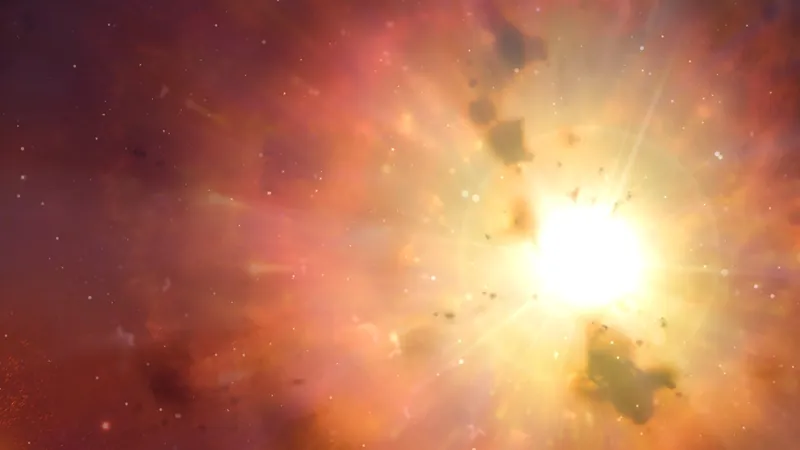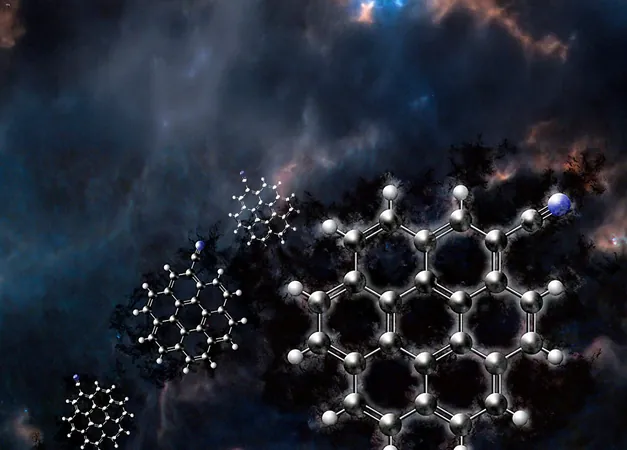
Astronomers Crack the Code: Spotting Supernovas Just Hours After They Explode!
2025-08-19
Author: Daniel
A Breakthrough in Supernova Detection
The universe just got a little clearer, thanks to a groundbreaking discovery in supernova detection! For years, catching these brilliant explosions of dying stars in their infancy has been a challenge—even for the most skilled astronomers. But now, scientists have unveiled a reliable method to spot these cosmic events just hours after they detonate!
The Elusive Supernova Mystery
While we understand that certain stars are destined to go supernova, pinpointing precisely when they will do so has been nothing short of astronomical luck. Past attempts relied heavily on chance observations—being in the right place at the right time to witness a supernova in all its glory.
Advancing technology has allowed large-scale surveys to scan the night sky regularly, enhancing our chances of detection. However, the real task has been sorting through the mountains of data these surveys produce to identify a fledgling supernova amid a host of other cosmic occurrences.
Introducing a New Detection Protocol!
A team of researchers led by Lluís Galbany from the Institute of Space Sciences in Barcelona has developed a foolproof protocol that resolves this issue. The key? The sooner a supernova is spotted, the better! They harnessed the power of the world’s largest optical telescope, the 10.4-meter Gran Telescopio de Canarias in the Canary Islands, to follow ten early supernova explosions.
In their findings, they successfully identified five core-collapsing supernovae and five detonating white dwarfs—most within six days of explosion, with a couple recorded in under 48 hours!
How They Did It
The detection process follows two critical steps. First, astronomers identify a new object absent from the previous night’s images, ensuring they are observing it at its birth—the earliest phase of the explosion. Secondly, they confirm the object resides in a galaxy, ruling out mistaken identifications with transient objects in our own Milky Way.
When both conditions align, the OSIRIS instrument on the Gran Telescopio de Canarias comes alive, ready to analyze the supernova's spectrum—revealing crucial details about the exploded star!
Unlocking the Secrets of Cosmic Flames
The early hours of a supernova offer a treasure trove of information about its former star. One phenomenon astronomers eagerly search for is the 'shock breakout'—a quick flash that occurs when the supernova shockwave bursts through the outer layers. Analyzing this flash helps deduce the asymmetrical nature of the explosion and provides insights into the star's internal structure and composition.
As the blast wave crashes into the star’s previously ejected materials, a fleeting 'flash spectrum' emerges, showcasing the gases surrounding the star and painting a picture of the cosmic environment leading to such catastrophic events.
The Future is Bright for Supernova Research
The Vera C. Rubin Observatory, set to begin operations before the end of 2025, is positioned perfectly to revolutionize supernova detection further. With an expected ten million alerts per night, researchers can filter through a variety of cosmic phenomena, ensuring that the new protocol is widely applicable.
Galbany envisions a future where astronomers routinely detect supernovas within 24 hours of their explosion, transforming our understanding of these spectacular cosmic events. This discovery invites us to delve deeper into the mysteries of the universe, igniting the flames of curiosity!

 Brasil (PT)
Brasil (PT)
 Canada (EN)
Canada (EN)
 Chile (ES)
Chile (ES)
 Česko (CS)
Česko (CS)
 대한민국 (KO)
대한민국 (KO)
 España (ES)
España (ES)
 France (FR)
France (FR)
 Hong Kong (EN)
Hong Kong (EN)
 Italia (IT)
Italia (IT)
 日本 (JA)
日本 (JA)
 Magyarország (HU)
Magyarország (HU)
 Norge (NO)
Norge (NO)
 Polska (PL)
Polska (PL)
 Schweiz (DE)
Schweiz (DE)
 Singapore (EN)
Singapore (EN)
 Sverige (SV)
Sverige (SV)
 Suomi (FI)
Suomi (FI)
 Türkiye (TR)
Türkiye (TR)
 الإمارات العربية المتحدة (AR)
الإمارات العربية المتحدة (AR)